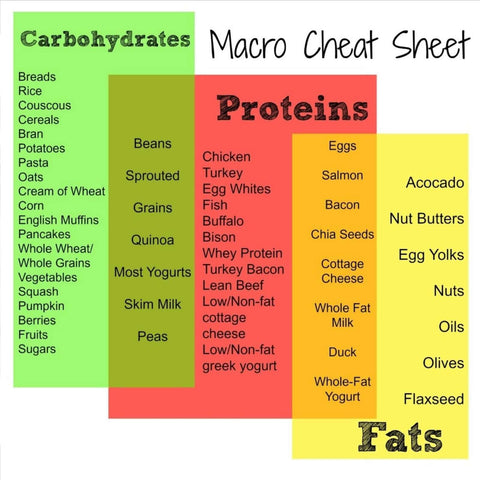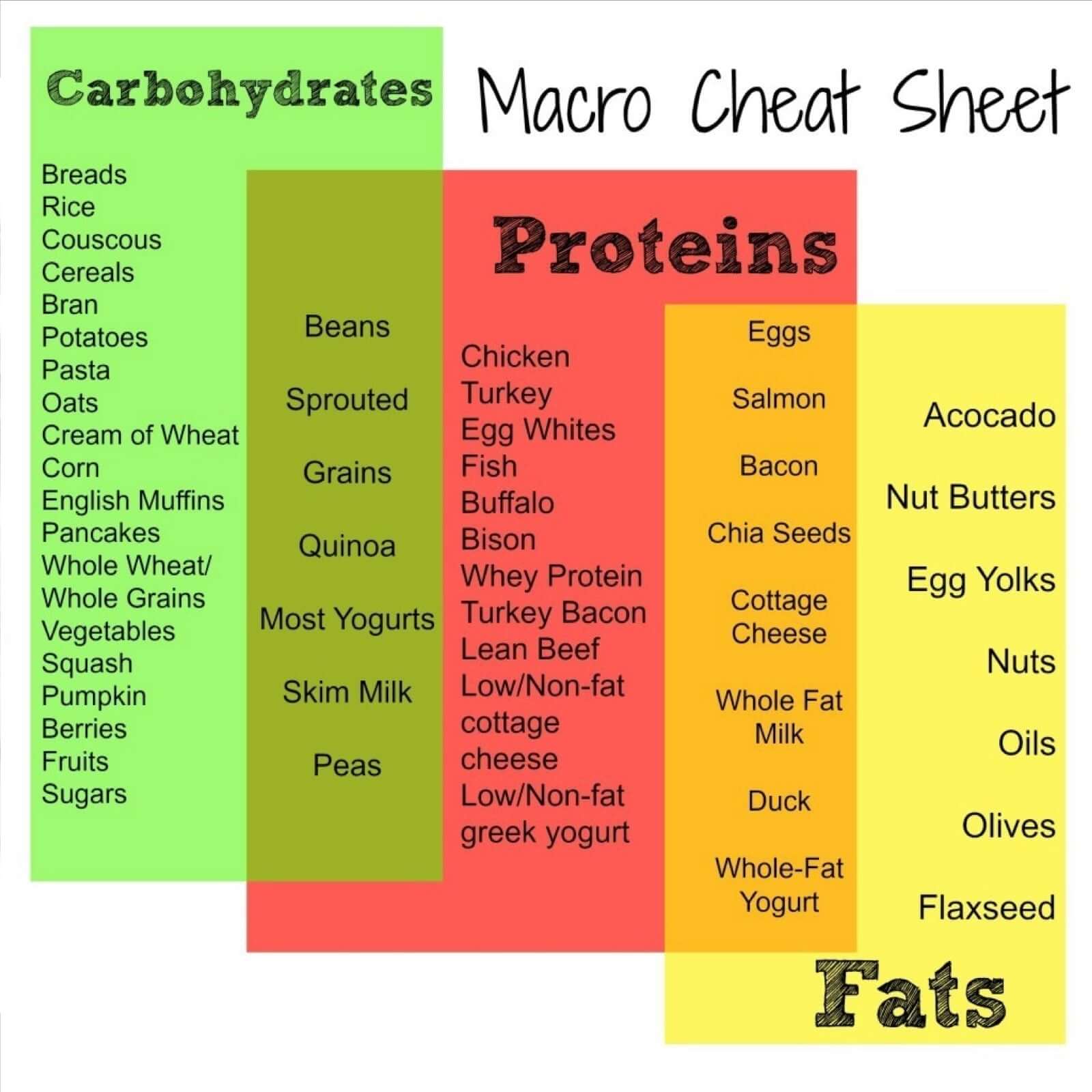"It fits my macros, bro!" "I cant eat that, it doesn't fit my macros." Chances are you have heard these phrases and seen people post about IIFYM (if it fits your macros) on their social media pages, but what are macros exactly? How do people eat what most of the fitness community deems as "bad" or "unclean" or "naughty foods" and still obtain their goals?
Macros, short for macronutrients, are what make up the calorie content of foods we eat. The three macronutrients are protein, fats, and carbs. Each one has their own calorie content per gram and play a role in body composition, performance, and hormones.
- Protein: 4 calories per gram. Protein is necessary for repairing the body's tissues. It is also the most metabolically demanding to break down therefore has a great thermogenic effect. It also is very satiating therefore should makeup to 35% of your calories to help keep you energized and full. Good examples of protein are lean meats, quality red meats, greek yogurt, eggs, beans, fish, some cheeses, whey protein, casein protein, and lentils.
- Carbohydrates: 4 calories per gram. Unfortunately carbs have gotten a bad rap. What most people are not understanding is that carbohydrates are not cookies, chips, cake and pizza. Those foods are very high in saturated fats as well. The right kind of carbs provide energy and regulate blood glucose, spare use of proteins for energy, biological recognition processes, dietary fiber, and also help with fat metabolism. Good examples of carbs are potatoes (any and all kinds), rice, quality breads, oats, fruit, quinoa, honey, and vegetables.
- Fats: 9 calories per gram. Fats are the spice of life! Everything tastes better with some fats. Of course, there are fats you should eat more of than the other but this isn’t a science lesson and its pretty easy to research for yourself. Fats are used as fuel source are essential for cell growth and some major hormone function. Without adequate fat intake your hormones can tank and leave you feeling exhausted and out of sorts. Fats should come primarily from egg yolks, avocado, fatty fish, nuts, seeds, heart healthy oils, grass fed butter, and naturally occurring fats from quality cuts of meat.
Depending on your goals you would set up a specific amount of each macro to hit daily resulting in total daily caloric value. Most people use an app on their smart phones to track their intake. My personal favorite is ‘myfitnesspal.’ It may take a bit to get used to it and get the hang of things but once you find your flow it’s pretty easy to prep and prepare and hit your goals!
KEEP IT SIMPLE! Yes, you can absolutely fit in fun treats and what not here and there without compromising your goals. However most of your food intake does need to come from nutrient dense foods to ensure you are receiving all the vital micro (vitamins minerals etc) nutrients your need to properly function. The easier the food is to prep in bulk, weigh/measure, and eat the better you will hit your goals.
Now how to calculate your macros and caloric intake. This is a lot easier than people make it out to be. First you need to ask yourself a few questions and the more honest you are the better your results.

- rare sighting, maybe 2 times a week
- active member, 3-5 times a week
- hardcore parkour!!! 5 and above a week (i do not recommend this)
How active am I outside of the gym (work and recreational life)
- desk job and coach potato
- active job (think mailman, waitress etc) and likes to get active outside
- physically demanding job (think construction type work)
Stress levels
- I’m cool as a cucumber
- I get stressed but know how to manage
- Stress is almost crippling (in this case I would never suggest a fat loss phase until stress is managed)
My goals
- fat loss
- maintain
- build up
If you answered 1-2 on any of these its easiest to take your current weight multiply that by 14 (give or take, if you are more on the less active side of things use 12/13) and that is roughly your baseline. PLEASE keep in mind this is a baseline. Everyone is different and it can take time to find your true caloric maintenance calories. If you are more on the extreme side of things I would use your weight multiplied by 15 and in some cases elite athletes by 16 but for the average person 12-14 is a better number.
If your goal is to lose fat I would start by subtracting 250 calories from that number (obese individuals can start at a much bigger deficit to ensure weight is brought down more rapidly to a safer BMI). To maintain, simply stay the number you found by multiplying your weight x whatever number you chose. To gain weight I would start at 200-250 above baseline and go from there to adjust if needed. The easiest macro breakdown to follow for beginners is setting your protein at 30% carbs at 40% and the remainder fats at 30%. Keep in mind you need to hit fiber goals as well 25-30 grams a day. I highly suggest and stress you map out your meals the night before so that you can ensure you are hitting the numbers with ease and aren't left guessing or worse, eating egg whites and sadness for dinner because you blew your calorie load too early in the day. Stay with +/- 3 grams of each macro daily to ensure intake is as accurate as possible. Calories at the end of the day may differ or be less/more than target intake but that does not matter as long as your macros are on point! Do not eyeball portions either. This ends up being a real eye opener for people with portion distortion. Weigh and measure in grams and ounces whenever possible!
I really hope this helps and lets you see that you do not have to suffer with boring meal plans and basic bro foods for the rest of your life. Happy counting, ya'll!
**Disclaimer: These statements have not been evaluated by the Food and Drug Administration. Information presented in this article is based on scientifically published literature and is not intended to be used for specific individual nutrition counseling needs.

